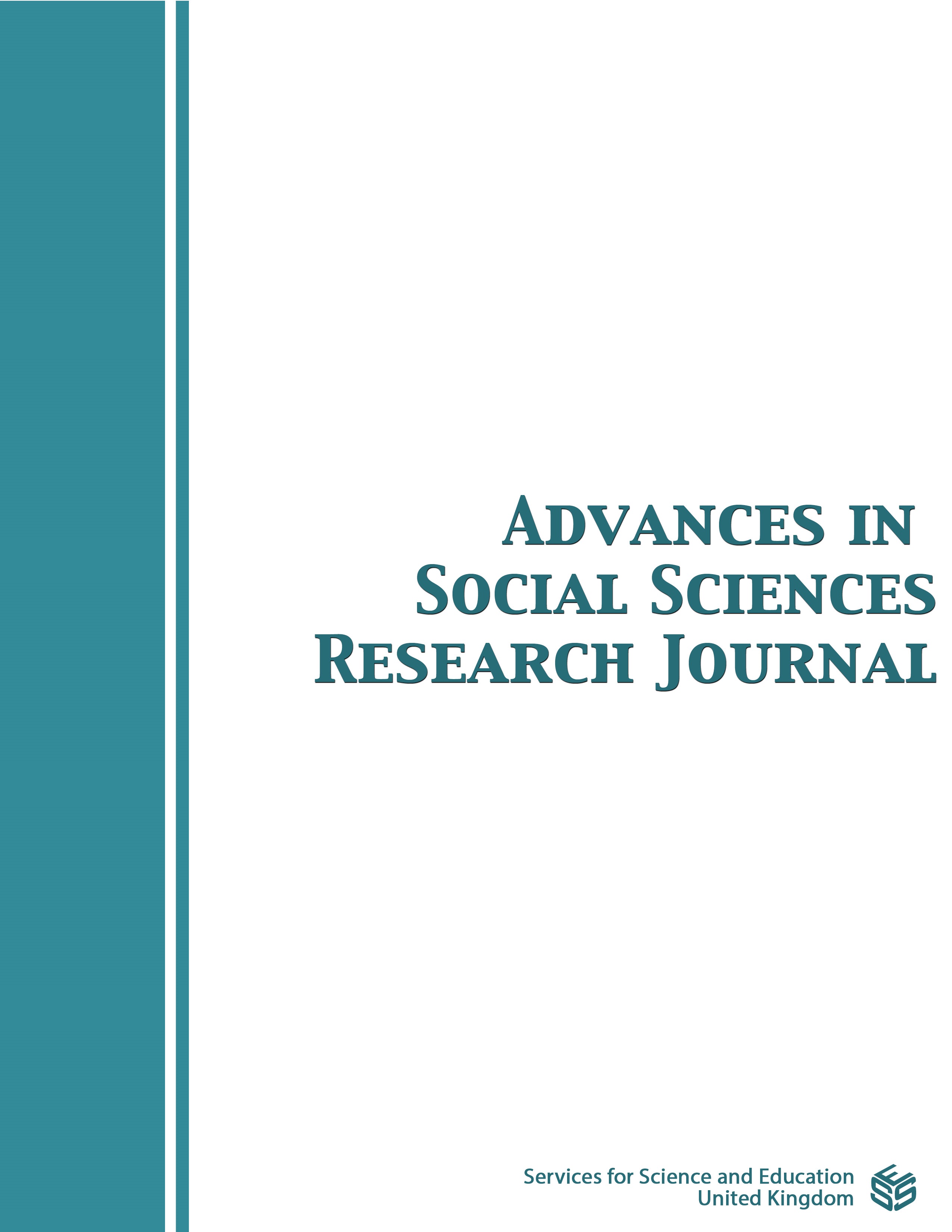Towards a three-dimensional hardening of schools to promote effective school safety practices in the United States: A systematic review
DOI:
https://doi.org/10.14738/assrj.88.10614Keywords:
School safety, target hardening, school violence prevention, systematic reviewAbstract
This article introduces a three-dimensional conceptual framework around approaches to promoting school safety practices in the United States. Our framework suggests school safety is maximized when three hardening dimensions are equally deployed – physical hardening (school’s environmental elements), procedural hardening (school’s policies and procedures), and psychological hardening (school’s strategies used to improve psychological wellbeing). A systematic review of the literature was completed and organized in the context of our three-dimensional framework to identify current hardening practices that have been empirically investigated. Among the 41 studies identified by our search criteria, 28 included physical hardening practices, 12 included procedural hardening practices, and 21 included psychological hardening practices. Few studies (n=8) included all three hardening practices within their efforts to promote school safety. The most commonly studied variables were school resource officers, locker checks, and clear and fair rules. Implications of this three-dimensional conceptual framework for future school safety research and policy directions in the United States are highlighted.
References
REFERENCES
Docherty M, Sweeten G, Craig T, et al. Prevalence and risk factors associated with carrying a gun to school during adolescence: A statewide study of middle and high school students. J Sch Violence. 2020;19(1):35-47. doi:10.1080/15388220.2019.1703718
Finkelhor D, Vanderminden J, Turner H, Shattuck A, Hamby S. At-school victimization and violence exposure assessed in a national household survey of children and youth. J Sch Violence. 2016;15(1):67-90. doi:10.1080/15388220.2014.952816
Mcmahon SD, Martinez A, Espelage D, et al. Violence directed against teachers: Results from a national survey. Psychol Sch. 2014;51(7):753-766. doi:http://dx.doi.org/10.1002/pits.21777
Melgar L. Are school shootings becoming more frequent? Published 2019. https://gunsandamerica.org/story/19/05/17/are-school-shootings-becoming-more-frequent-we-ran-the-numbers/
Page A. Center for Homeland Defense and Security releases comprehensive database of school shootings in America. Published 2018. https://www.hsdl.org/c/database-of-school-shootings-in-america
Kolbe LJ. School Gun Violence in the United States. J Sch Health. 2020;90(3):245-253. doi:https://doi.org/10.1111/josh.12866
Federal Commission on School Safety. Final Report of the Commission on School Safety. Published 2018. https://www2.ed.gov/documents/school-safety/school-safety-report.pdf
Carlson JS. Keeping students safe is a growth industry struggling to fulfill its mission. The Conversation. Published 2019. https://theconversation.com/keeping-students-safe-is-a-growth-industry-struggling-to-fulfill-its-mission-122705
Cowan KC, Vaillancourt K, Rossen E, Pollitt K. A Framework for Safe and Successful Schools. National Association of School Psychologists; 2013.
U.S. Secret Service. Enhancing School Safety Using a Threat Assessment Model: An Operational Guide for Preventing Targeted School Violence. U.S. Department of Homeland Security; 2018. https://www.secretservice.gov/sites/default/files/reports/2020-10/USSS_NTAC_Enhancing_School_Safety_Guide.pdf
Cohen LE, Felson M. Social change and crime rate trends: A routine activities approach. Am Sociol Rev. 1979;44(4):588-608. doi:10.2307/2094589
Musu L, Zhang A, Wang K, Zhang J, Oudekerk BA. Indicators of School Crime and Safety. National Center for Education Statistics, U.S. Department of Education; 2019. https://nces.ed.gov/pubs2019/2019047.pdf
Clark RD, Lab SP. Community characteristics and in-school criminal victimization. J Crim Justice. 2000;28(1):33-42. doi:http://dx.doi.org/10.1016/S0047-2352(99)00030-6
Dohy J, Banks T. The impact of school policing on student behaviors in Ohio public schools. J Sch Violence. 2018;17(3):311-323. doi:http://dx.doi.org/10.1080/15388220.2017.1322519
Horton A. The prevention of school violence: New evidence to consider. J Hum Behav Soc Environ. 2001;4(1):49-59. doi:http://dx.doi.org/10.1300/J137v04n01_04
Kitsantas A, Ware HW, Martinez-Arias R. Students’ perceptions of school safety: Effects by community, school environment, and substance use variables. J Early Adolesc. 2004;24(4):412-430. doi:http://dx.doi.org/10.1177/0272431604268712
Perumean-Chaney SE, Sutton LM. Students and perceived school safety: The impact of school security measures. Am J Crim Justice. 2013;38(4):570-588. doi:http://dx.doi.org/10.1007/s12103-012-9182-2
Liberati A, Altman DG, Tetzlaff J, et al. The PRISMA statement for reporting systematic reviews and meta-analyses of studies that evaluate health care interventions: Explanation and elaboration. Ann Intern Med. 2009;151(4):W65-94. internal-pdf://128.111.178.117/Liberati et al. (2009). The PRISMA statement f.pdf
Cecen-Celik H, Keith S. Analyzing predictors of bullying victimization with routine activity and social bond perspectives. J Interpers Violence. 2019;34(18):3807-3832. doi:http://dx.doi.org/10.1177/0886260516672941
Mueller RO, Hancock GR. Structural equation modeling. In: Hancock GR, Mueller RO, eds. The Reviewer’s Guide to Quantitative Methods in Social Sciences. Routledge; 2010:371-384.
Fisher BW, Mowen TJ, Boman IV JH. School security measures and longitudinal trends in adolescents’ experiences of victimization. J Youth Adolesc. 2018;47(6):1221-1237. doi:http://dx.doi.org/10.1007/s10964-018-0818-5
Gerlinger J, Wo JC. Preventing school bullying: Should schools prioritize an authoritative school discipline approach over security measures? J Sch Violence. 2016;15(2):133-157. doi:http://dx.doi.org/10.1080/15388220.2014.956321
Mayer MJ, Leone PE. A structural analysis of school violence and disruption: Implications for creating safer schools. Educ Treat Child. 1999;22(3):333-356. http://ezproxy.msu.edu/login?url=https://search.proquest.com/docview/619440096?accountid=12598
Cheurprakobkit S, Bartsch RA. Security measures on school crime in Texas middle and high schools. Educ Res. 2005;47(2):235-250. doi:http://dx.doi.org/10.1080/00131880500104366
Cuellar MJ. School safety strategies and their effects on the occurrence of school-based violence in U.S. high schools: An exploratory study. J Sch Violence. 2018;17(1):28-45. doi:http://dx.doi.org/10.1080/15388220.2016.1193742
Cuellar MJ, Elswick SE, Theriot MT. School social workers’ perceptions of school safety and security in today’s schools: A survey of practitioners across the United States. J Sch Violence. 2018;17(3):271-283. doi:http://dx.doi.org/10.1080/15388220.2017.1315308
Sevigny EL, Zhang G. Do barriers to crime prevention moderate the effects of situational crime prevention policies on violent crime in high schools? J Sch Violence. 2018;17(2):164-179. doi:http://dx.doi.org/10.1080/15388220.2016.1275657
Zhe EJ, Nickerson AB. Effects of an intruder crisis drill on children’s knowledge, anxiety, and perceptions of school safety. School Psych Rev. 2007;36(3):501-508. http://ezproxy.msu.edu/login?url=https://search.proquest.com/docview/621905071?accountid=12598
Price JH, Khubchandani J. School firearm violence prevention practices and policies: Functional or folly? Violence Gend. 2019;6(3):154-167. doi:http://dx.doi.org/10.1089/vio.2018.0044
Downloads
Published
How to Cite
Issue
Section
License
Copyright (c) 2021 HaeDong Kim, John Carlson, Sydney Nelson

This work is licensed under a Creative Commons Attribution 4.0 International License.
Authors wishing to include figures, tables, or text passages that have already been published elsewhere are required to obtain permission from the copyright owner(s) for both the print and online format and to include evidence that such permission has been granted when submitting their papers. Any material received without such evidence will be assumed to originate from the authors.






